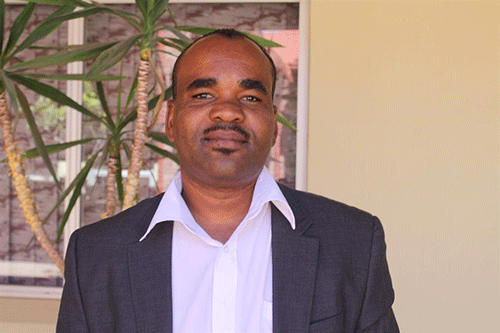Cons Karamata
Nangula Uaandja
Green hydrogen is poised to become a critical source of energy in global energy markets, playing an increasingly central role in the transition to a green energy future. With usage in diverse areas such as transport, manufacturing, the steel industry, refineries and the chemical industry, green hydrogen is expected to play a pivotal role in transforming global industries as countries around the world are seeking to decarbonise their economies.
According to the Global Opportunity Analysis and Industry Forecast 2021–2028, the global green hydrogen market size was valued at US$ 0.3 billion in 2020 and is projected to reach US$9.8 billion by 2028, growing at a compound annual growth rate (CAGR) of 54.7% from 2021 to 2028.
The most advanced method of producing hydrogen gas on an industrial scale is referred to as electrolysis, a process that uses electrical energy to break down water into its molecules of hydrogen and oxygen. To count as green hydrogen, the electricity used to run the electrolysis process must come from renewable sources, leading to minimal carbon emissions in the production process.
Namibia, with its abundant sunshine and wind conditions, combined with our long coastlines and vast seawater, has great potential to leapfrog the rest of the world and develop a sustainable green hydrogen industrial base that will drive socio-economic growth, create employment and emerge as a sustainable energy supply for Namibia and southern Africa.
Against that background, in 2021, the country took the first step to position itself at the forefront of the global aspirations for green hydrogen production by setting in motion plans to develop the country’s first vertically-integrated green hydrogen project in the Southern Corridor Development Initiative (SCDI). The company is expected to develop a major, integrated high-capacity hydrogen project at the Tsau //Khaeb National Park valued at US$ 9.4 billion. The project is expected to eventually produce 300 000 tonnes of raw hydrogen annually for the domestic, regional and international markets. It is estimated that this landmark project will create 15 000 direct jobs in the four years of integrated construction and 3 000 direct jobs during the first two phases, while contributing to other efforts to promote economic
stability.
The project forms an integral part of Namibia’s development plans within the context of the SCDI as outlined in the Economic Advancement Pillar of the Harambee Prosperity Plan II.
This milestone project and the related eventual development of a full-scale green hydrogen industry present enormous upstream and downstream opportunities for Namibia’s private sector along the value chain. Upstream opportunities exist in areas such as wind turbines and solar panels’ assembly, IT services, consulting and water provision, while downstream prospects range from the production of fertilisers, green ammonia, green zinc, aviation and diamonds as well as the construction of port and rail networks.
While Namibia’s abundant renewable resources set the country apart with regards to its investment potential for green hydrogen, the full-scale development of a green hydrogen industry will require the country to have in place relevant legal frameworks, infrastructure and human resources that will turn the expected investments in this area into broad-based, inclusive economic growth.
Developing this capacity will require planning and broad-based consultations with key players in Namibia’s economy, both in the public and private sectors. Input will also be required from civil society, community groups and academia. Such consultations will ensure that pitfalls that are at times associated with large investment projects in developing countries are avoided, and that opportunities presented by these exciting ventures are translated into inclusive development.
The Namibia Investment Promotion and Development Board (NIPDB), together with the Economic Association of Namibia and in collaboration with our development partners, looks forward to facilitating these conversations and ensuring that capital inflows into this emerging sector lead to the development of an integrated industrial base with linkages to the rest of the economy, creating sustainable jobs and contributing to the social welfare of Namibia’s people.
* Nanguala Uaandja is the CEO of NIPDB.
Cons Karamata is the CEO of the Economic Association of Namibia.


